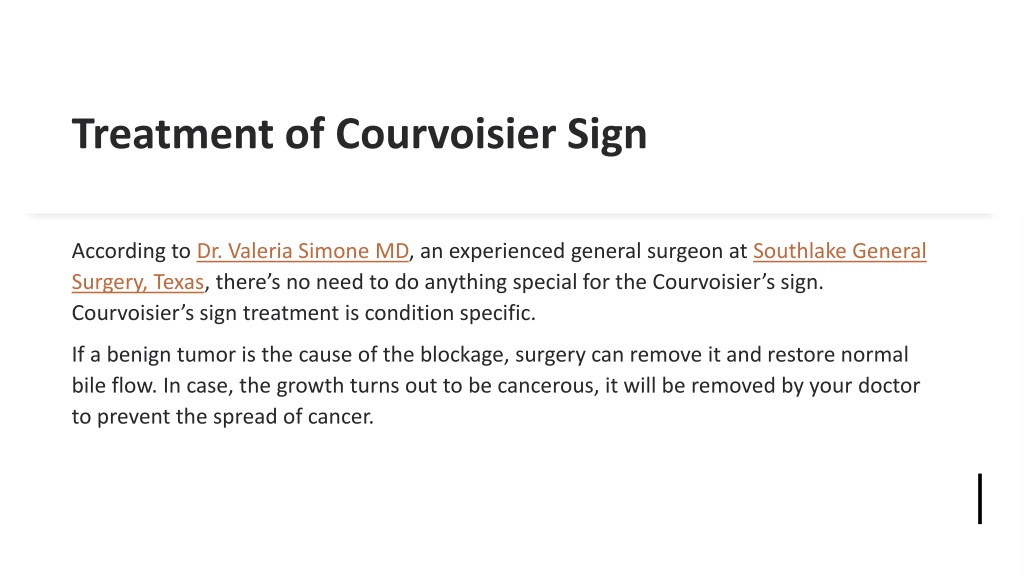
PPT Courvoisier Sign Symptoms and Treatment PowerPoint Presentation ID11708771
The Courvoisier's sign (also called "Courvoisier's law" or "Courvoisier's gallbladder") is an eponymous medical term, stating that patients with painless jaundice and an enlarged, palpable gallbladder often have a non-calculus obstruction of the biliary system [].This classic clinical sign first appeared in the 1890 edition of the book "The pathology and surgery of the.

PPT Courvoisier Sign Symptoms and Treatment PowerPoint Presentation ID11708771
1. Periampullary tumors (Bulging papilla sign on radiograph): Tumors of pancreatic head/uncinate process Tumors of distal common bile duct Ampullary tumors (of ampulla of vater) Periampullary duodenal tumors 2. Pancreatic stricture: Chronic pancreatitis 3. Portal lymphadenopathy 4. Bile duct obstruction due to ascaris 5.

Courvoisier Sign or CourvoisierTerrier Sign States GrepMed
In 1890 Ludwig Courvoisier and Louis-Felix Terrier described a common bile duct obstruction leading to secondary dilation of the gallbladder to the point that it could be felt. We present a.
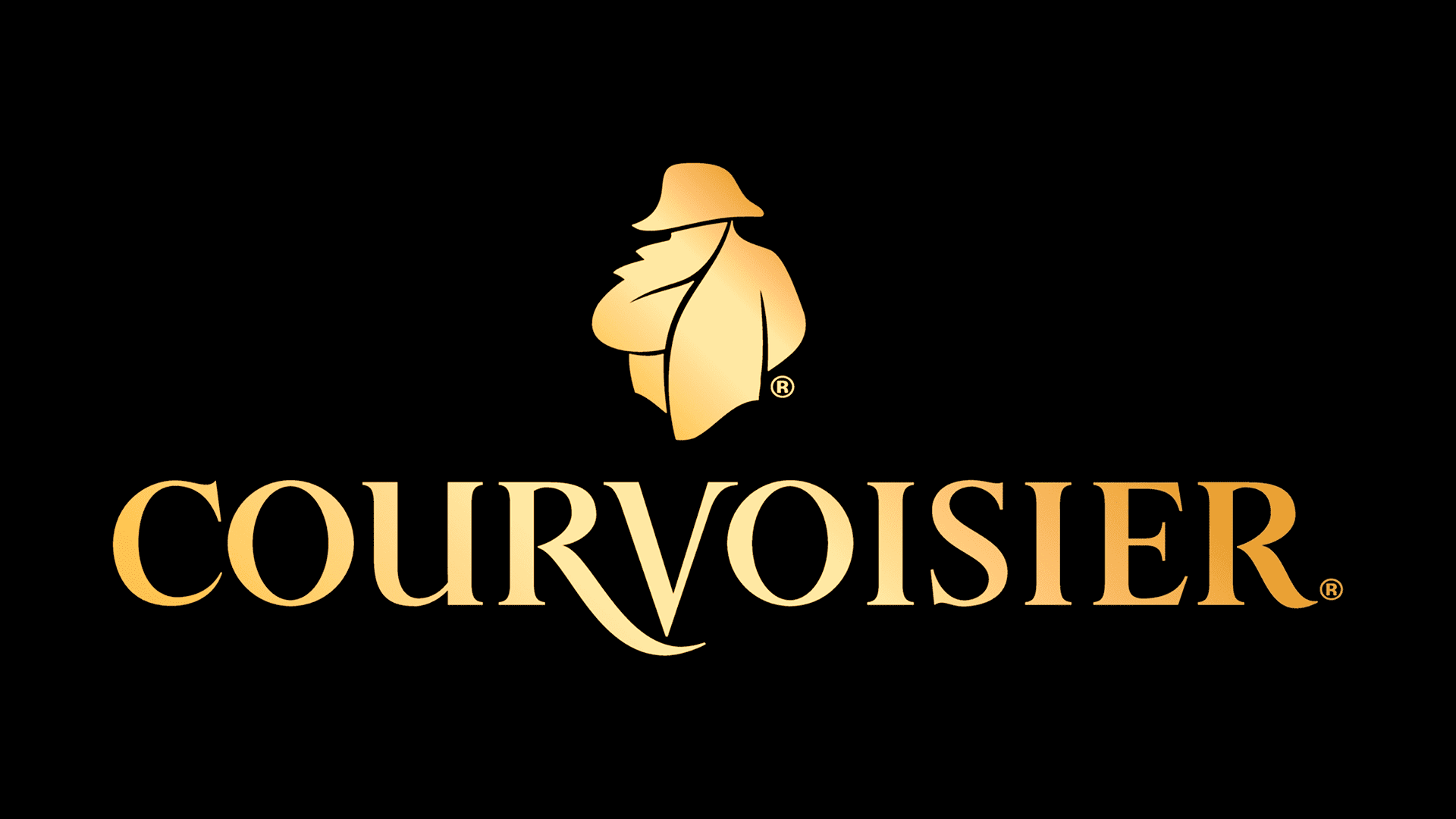
Courvoisier Logo Logo, zeichen, emblem, symbol. Geschichte und Bedeutung
The Courvoisier sign refers to a gallbladder that has become swollen due to the buildup of bile. It is also known as Courvoisier's law. If you have this condition, your doctor will be able to.
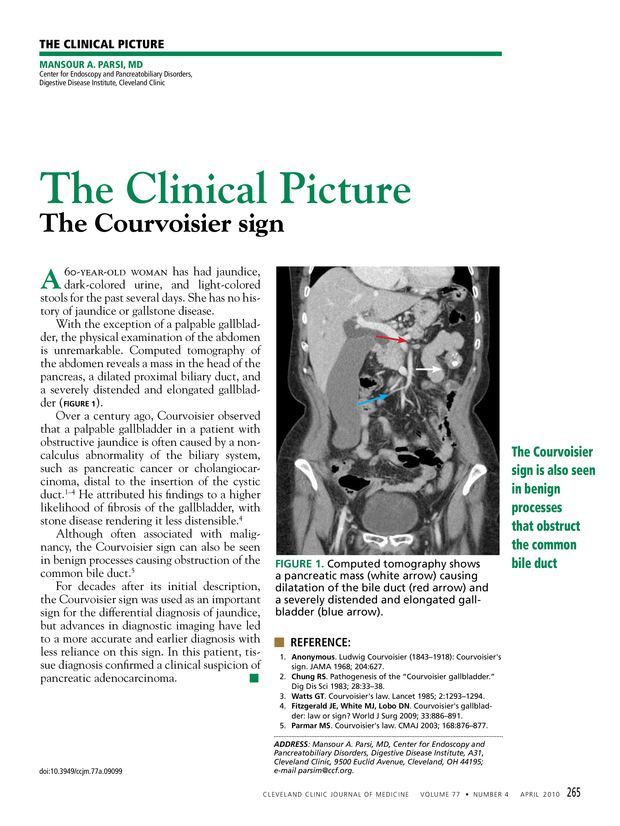
The Courvoisier sign Cleveland Clinic Journal of Medicine
Courvoisier's principle (known as Courvoisier's sign or Courvoisier-Terrier's sign, or Courvoisier syndrome) states that a painless palpably enlarged gallbladder accompanied with mild jaundice is unlikely to be caused by gallstones. Usually, the term is used to describe the physical examination finding of the right-upper quadrant of the abdomen.

(PDF) The sign of Courvoisier Terrier
A 60-year-old woman has had jaundice, dark-colored urine, and light-colored stools for the past several days. On examination, her gallbladder is palpable.
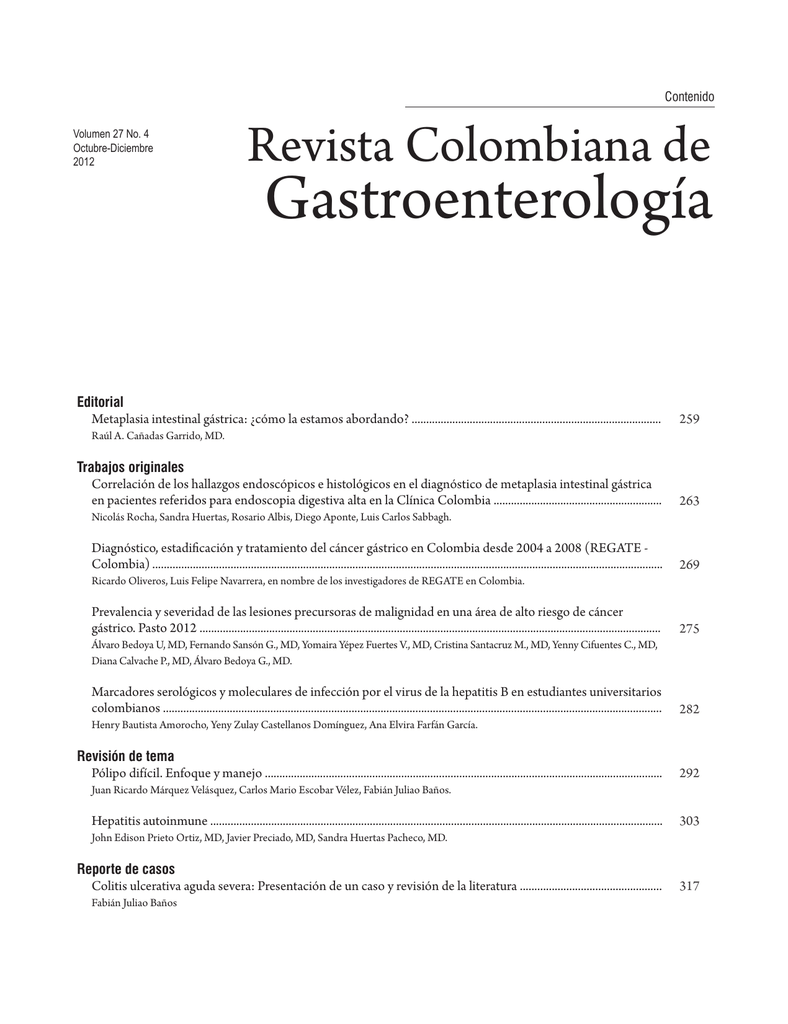
El signo de Courvoisier Terrier
The sign of Courvoisier Terrier M. Gómez, L. Delgado, William Otero Regino Published 1 October 2012 Medicine TLDR It is shown how new diagnostic methods can help diagnose a common bile duct obstruction leading to se- condary dilation of the gallbladder to the point that it could be felt. Expand gastrocol.com Save to Library Create Alert Cite
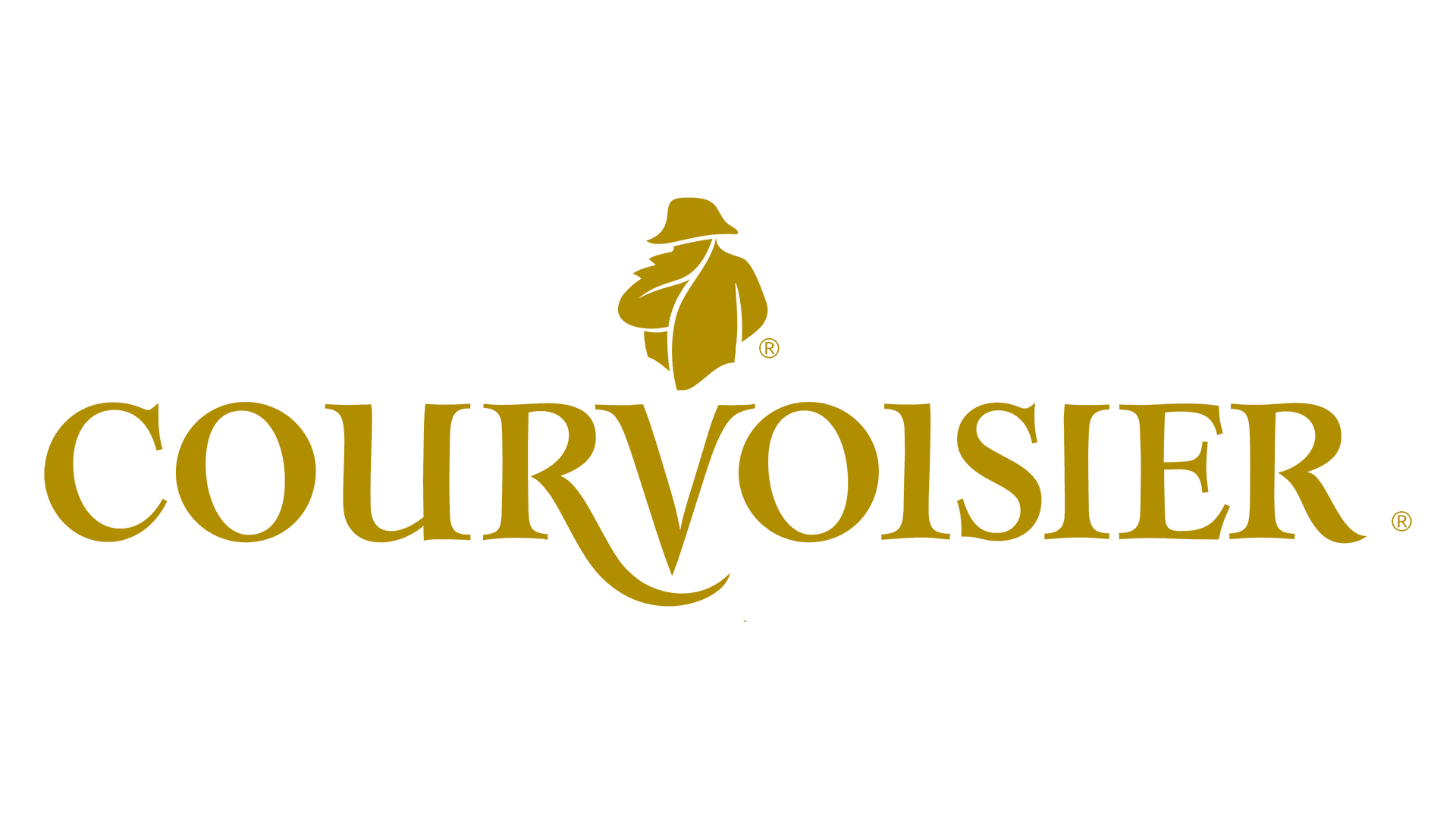
Courvoisier Logo valor, história, PNG
Courvoisier's (koor-vwah-zee-ayz) law states that in the presence of a non-tender palpable gallbladder, painless jaundice is unlikely to be caused by gallstones.1 It is generally implicated to be caused by malignancy, as the gallbladder obstruction caused by stones is intermittent, and the gallbladder is chronically shrivelled and fibrosed, and.

PPT Courvoisier Sign Symptoms and Treatment PowerPoint Presentation ID11708771
120 years ago Ludwig Courvoisier and Louis Terrier des-cribed one of the classic signs in medicine, a sign that has endured the passage of time and modern imaging techni-ques (1), despite demonstration of multiple exceptions. We refer to the Courvoisier-Terrier's sign, a painless pal-pable finding from physical examination of the gallbladder.

Courvoisier sign CT and US correlates Image
In 1890 Ludwig Courvoisier and Louis-Felix Terrier described a common bile duct obstruction leading to secondary dilation of the gallbladder to the point that it could be felt.

(PDF) The sign of Courvoisier Terrier
Courvoisier sign or Courvoisier-Terrier sign states that in a patient with painless jaundice and an enlarged gallbladder (or right upper quadrant mass), the cause is unlikely to be gallstones and therefore presumes the cause to be an obstructing pancreatic or biliary neoplasm until proven otherwise 1. History and etymology

Signo de Courvoisier uDocz
Courvoisier Sign or Courvoisier-Terrier Sign States that in a patient with painless jaundice & an enlarged gallbladder (or right upper quadrant mass), the cause is unlikely to be gallstones & therefore presumes the cause to be an obstructing pancreatic or biliary neoplasm until proven otherwise. A gallbladder containing stones is likely to have been chronically diseased & subject to repeated.

Courvoisier sign CT and US correlates Image
it is common practice to refer to the common hepatic/bile duct as the common duct ( CD) when reporting ultrasound, as the confluence of the cystic duct with the common hepatic duct (CHD) to form the common bile duct (CHD) is often not clearly defined.

Olhar Médico Sinal de CourvoisierTerrier (Síndrome de Courvoisier)
Courvoisier syndrome is also called Courvoisier's law or Courvoisier's sign. It means that you have jaundice and a gallbladder that is enlarged but is not painful. Your doctor can feel an enlarged gallbladder when they examine you. The gallbladder is a small pouch by the liver. It fills with bile, a yellowish liquid which helps to digest fats.

Ictericaobstrutiva
For Murphy Sign, when the patient breathes in, they stop suddenly as deep breathing hurts when pressure is applied to the right upper quadrant of the abdomen

courvoisierterrier bulgusu interaktif sözlük
The pug is a classic example of a brachycephalic breed (photocredit: Morguefile.com) Most people are not familiar with the term "Brachycephalic," but if you own a Pug, Boston Terrier, Pekingese, Boxer, Bulldog, Shih tzu or any one of the other breeds with "pushed in" faces, you should become familiar with this word.The word comes from Greek roots "Brachy," meaning short and "cephalic," meaning.